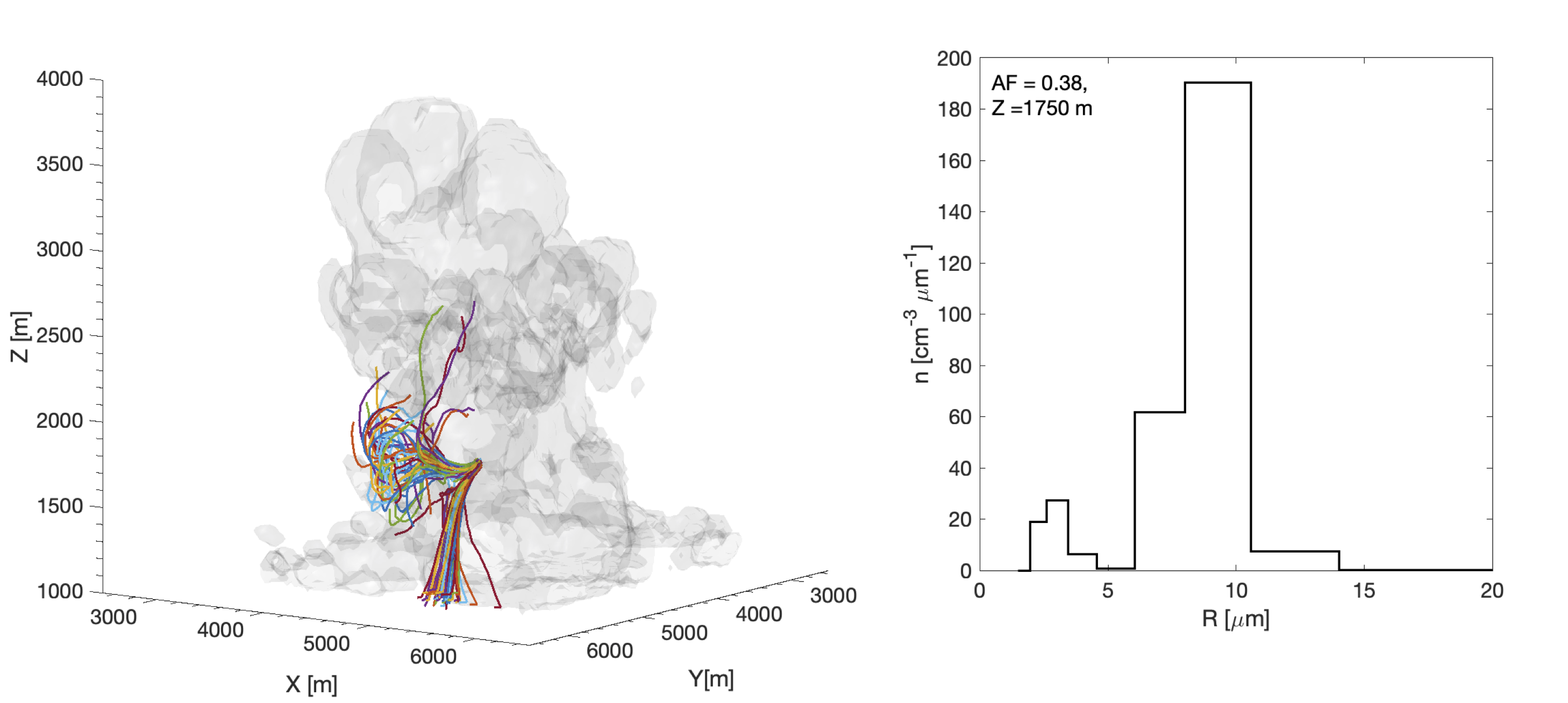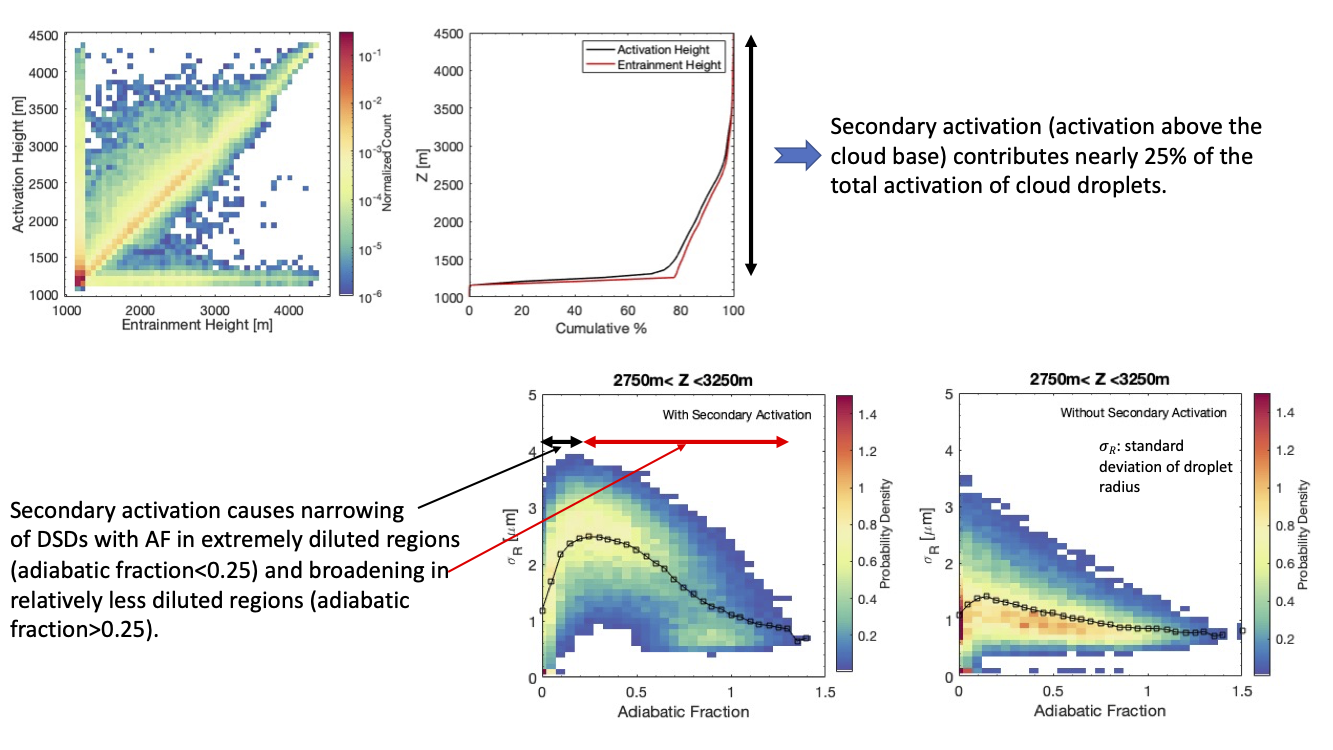Impact of entrainment-mixing and turbulence on droplet size distributions in a cumulus cloud
Submitter
Chandrakar, Kamal Kant — NSF National Center for Atmospheric Research
Grabowski, Wojciech — National Center for Atmospheric Research (NCAR)
Area of research
Cloud Processes
Journal Reference
Science
Cumulus clouds are still a challenging cloud type for climate studies, and their impact on radiative forcing and precipitation formation depends on cloud droplet concentrations and sizes. A turbulent environment drives variability in droplet growth, and entrainment of relatively dry surrounding air and aerosol particles into clouds affect droplet size distributions in different cloud regions.
Impact
Using a cutting-edge simulation tool, this study investigated the role of small-scale (below model resolution) turbulent fluctuations, entrainment, and droplet formation from entrainment of aerosols on cloud properties, especially droplet size distributions, in a cumulus congestus cloud. Small-scale turbulent fluctuations affect droplet activation and the width of droplet size distributions noticeably, and droplet formation from entrained aerosols affects droplet size distributions differently in highly diluted and less-diluted cloud regions.
Summary
A Lagrangian cloud microphysics scheme (“super-droplet method”) that tracks representative aerosol and cloud particles coupled with sub-grid-scale schemes for particle transport and supersaturation fluctuations was implemented in NCAR’s Cloud Model 1 (Cloud Model 1) during this project. This sophisticated modeling tool allows investigating the impact of turbulence and entrainment on cloud droplets with great detail (e.g., Lagrangian history of aerosol and cloud droplets, interactions of droplets with sub-grid turbulence, etc.). Simulations with a sub-grid-scale supersaturation model produce more activation near the cloud base and broader droplet size distributions throughout the cloud depth, partially compensating for reduced resolution in tests with the model resolution decreased. Droplet size distribution width increases with increasing entrainment-induced dilution as expected, except in the most diluted cloud regions. In these simulations, activation of droplets above the cloud base contributes about 25% of the total cloud droplet population. This process impacts droplet size distributions in two contrasting ways: narrowing with dilution in highly diluted cloud regions and broadening in less-diluted regions.



